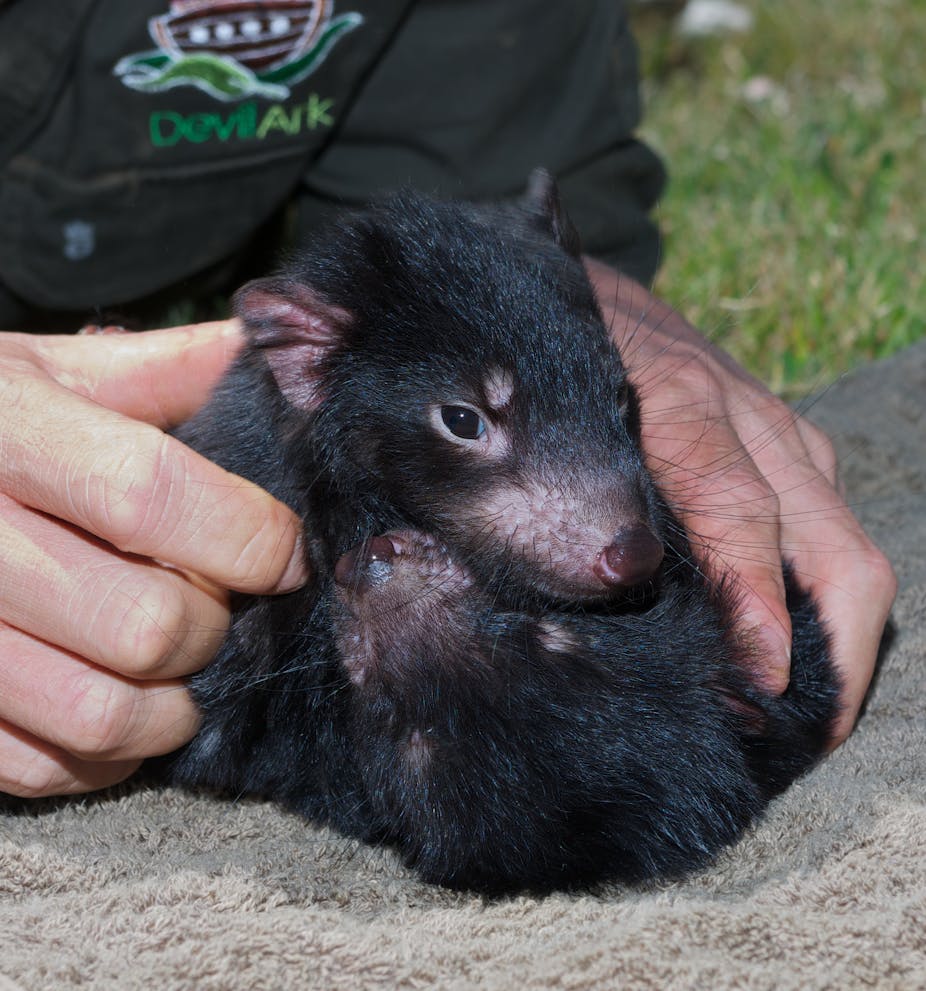The facial tumour responsible for wiping out 85% of Tasmanian Devils is spreading regardless of genetic differences across the species, undermining the theory that it is mostly deadly in communities whose genetic make-up resembles that of the cancer, research has found.
Findings by a team from the University of Sydney and University of Tasmania, published in PLoS, the Public Library of Science journal, would force scientists to rethink their approach in the race to halt the highly contagious Devil Facial Tumour Disease (DFTD), the team said.
Because devil populations have low genetic diversity, most share the same Major Histocompatibility Complex (MHC) genes that appear in the tumours. Scientists believed that since the tumours were genetically similar to the devil’s own cells, their immune system could not recognise that the cancer cells were foreign and would not attack them.
For that reason they looked at a population in West Pencil Pine, in north-western Tasmania, where many of the devils are genetically different to the animals in the east of the state. “We thought these genetically different animals might be able to mount an immune response against the tumours,” said Associate Professor Kathy Belov, from the University of Sydney’s Faculty of Veterinary Science.
“They are the first population to be less severely affected by DFTD than other populations,” she said.
In West Pencil Pine the disease is less common, and infected animals survive for longer periods of time. There have been only minor changes in the population size and growth rate, four years after the disease was first detected.
“We thought that differences in certain key immune genes might explain the different susceptibility patterns between devils in West Pencil Pine and other devils,” Professor Belov said. “We thought devils that were most genetically different to the tumours would be less likely to catch DFTD. This isn’t the case.”
Professor Belov surmised that the tumour itself was suppressing the immune response in infected animals. The cancer has been evolving and changing over time, she said, so it was possible that the strain in West Pencil Pine was different - “and that is why fewer animals are getting sick in that region”.
The next step will be to look more closely at the tumours in West Pencil Pine and at genetic difference across the entire devil genome, rather than simply focusing on the MHC genes. West Pencil Pine may still hold the key to why some devils become infected and others do not.

